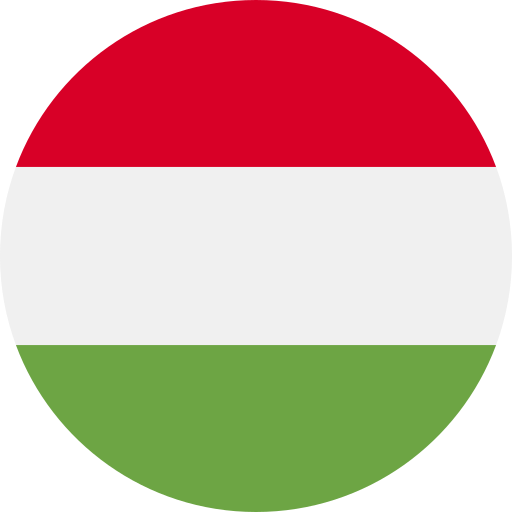Key Takeaways
- Connection Among Uralic Nations: The Hungarian language serves as a vital link among various Uralic nations, fostering cultural identity and shared heritage.
- Diverse Linguistic Traits: Each Uralic language has unique characteristics; Hungarian’s agglutination and extensive case system set it apart from Finnish and Estonian.
- Cultural Exchange: Hungarian culture significantly influences other Uralic nations through literature, music, and traditions that resonate across ethnic boundaries.
- Challenges in Language Preservation: Many smaller ethnic groups within the Uralic family face challenges in maintaining their languages due to globalization and societal attitudes.
- Educational Importance: Promoting education around the Hungarian language enhances understanding of its significance in connecting diverse cultures within the Uralic network.
- Societal Perspectives Matter: Positive societal attitudes towards the Hungarian language can encourage its use among younger generations, aiding in cultural preservation.
Have you ever wondered how the Hungarian language connects various Uralic nations? This unique relationship goes beyond mere linguistic curiosity; it reveals a rich tapestry of culture, history, and identity. As you explore this fascinating topic, you’ll discover how these nations share not just roots but also influences that shape their modern identities.
Understanding the significance of Hungarian in the context of Uralic languages can deepen your appreciation for cultural diversity. It’s more than just words; it’s about shared heritage and communication across borders. So, let’s dive into this captivating world where language intertwines with the stories of people who speak it. You’ll find insights that may surprise you and broaden your perspective on what it means to be part of a larger linguistic family.
Overview of Uralic Nations
Uralic nations consist of several ethnic groups and languages that share a common linguistic heritage. This family includes the Finnish, Estonian, and Hungarian people, among others. Each nation contributes to the rich tapestry of Uralic culture.
Key Uralic Nations
- Hungarians: The largest group within the Uralic nations. Their language, Hungarian, stands out due to its unique structure and vocabulary.
- Finns: They speak Finnish, which shares similarities with Estonian but differs significantly from Hungarian. Finland’s cultural traditions reflect a blend of ancient customs and modern influences.
- Estonians: Like Finnish speakers, Estonians embrace their distinct language while sharing historical ties with their northern neighbors. Cultural events highlight this connection.
Lesser-Known Groups
- Sami: Inhabiting parts of Norway, Sweden, Finland, and Russia, Sami peoples have their own languages and traditions that vary across regions.
- Mari: Residing mainly in Russia’s Mari El Republic, they speak the Mari language. Their folklore and music play a vital role in preserving their identity.
Linguistic Connections
Uralic languages all stem from a common ancestor known as Proto-Uralic. Despite linguistic differences among these nations today—like vowel harmony in Finnish or agglutination in Hungarian—the underlying connections remain evident through shared grammatical structures and vocabulary roots.
Understanding this network fosters appreciation for cultural diversity across Uralic nations. It also highlights how communication facilitates shared heritage among these communities. Engaging with these cultures enriches your perspective on global identities linked by language.
The Hungarian Language
The Hungarian language stands out within the Uralic family, showcasing unique features that differentiate it from other languages. Understanding its historical roots and linguistic characteristics offers valuable insights into the identity of Uralic nations.
Historical Development
Hungarian traces its origins to Proto-Uralic, a common ancestor shared with languages like Finnish and Estonian. Over centuries, it evolved significantly due to influences from neighboring cultures, particularly during the Ottoman Empire and Austro-Hungarian rule. As a result, Hungarian absorbed vocabulary from Slavic, Germanic, and Latin languages. These historical interactions enriched its lexicon while maintaining distinct grammatical structures.
Linguistic Characteristics
Hungarian exhibits several notable linguistic traits:
- Agglutination: Words typically consist of a base form combined with various prefixes and suffixes to convey complex meanings.
- Vowel Harmony: This principle dictates that vowels within a word harmonize in frontness or backness, affecting suffix selection.
- Case System: Hungarian uses numerous cases—up to 18—to express relationships between nouns and verbs.
Exploring these features highlights how Hungarian serves as a bridge connecting diverse Uralic cultures while preserving its uniqueness in grammar and syntax. By delving into the complexities of this language, you can appreciate not only its beauty but also its role in fostering connections among Uralic nations.
Uralic Nations and Their Languages
Uralic nations encompass a diverse range of ethnic groups, each with its own unique linguistic heritage. The connection between these nations highlights both cultural identity and shared history.
Major Uralic Nations
- Hungarians: As the largest Uralic group, Hungarians speak Hungarian, a language distinct in its structure and vocabulary. Its agglutinative nature allows for rich expression through word formation.
- Finns: Finnish is noted for its vowel harmony and extensive case system, allowing nuanced communication. The Finns share cultural ties with other Uralic groups while maintaining their individual traditions.
- Estonians: Estonian closely resembles Finnish but includes unique elements influenced by neighboring languages like German and Russian. This blend enriches their cultural narrative.
- Sami: Sami encompasses several dialects spoken across northern regions of Norway, Sweden, Finland, and Russia. Each dialect reflects local traditions and customs.
- Mari: The Mari people primarily reside in Russia’s Mari El Republic, speaking the Mari language which showcases distinctive phonetic features that differ from mainstream Uralic languages.
Unique Aspects of Each Language
- Hungarian: Known for its complex case system that exceeds 18 cases, Hungarian’s grammatical structure is intricate yet fascinating to learn.
- Finnish: Finnish utilizes vowel harmony where vowels within a word harmonize based on front or back categories—this feature adds melodic quality to the language.
- Estonian: Estonian employs an extensive use of consonant gradation affecting how words transform during inflection—creating rhythmic patterns in speech.
- Sami Dialects: Varied Sami dialects reflect geographical influences; they showcase unique sounds and structures—demonstrating adaptability over time.
- Mari Language Features: Mari integrates various tones into its spoken form; this tonal aspect distinguishes it from other Uralic languages, contributing to its richness.
Understanding these nuances strengthens appreciation for the interconnectedness among Uralic nations while celebrating each language’s individuality within the broader cultural tapestry they weave together.
The Significance of Hungarian Language in Uralic Nations
The Hungarian language plays a vital role within the context of Uralic nations, influencing cultural identity and fostering connections among diverse ethnic groups. Its distinct characteristics contribute to a rich tapestry of traditions and shared history.
Cultural Impact
Hungarian culture significantly influences Uralic nations through its language. Unique customs, folklore, and art often originate from linguistic expressions that shape collective identities. Celebrations like the Budapest Spring Festival showcase this connection by highlighting traditional music, dance, and culinary arts rooted in the Hungarian language. These cultural elements resonate with other Uralic peoples, such as Finns or Estonians, reinforcing connections while celebrating their individuality.
Moreover, literature offers another avenue for cultural exchange. Renowned works by Hungarian authors provide insights into universal themes that resonate across borders. Reading these pieces fosters understanding and appreciation for both shared experiences and distinct perspectives among Uralic nations.
Educational Aspects
Education surrounding the Hungarian language enhances awareness of its significance in Uralic communities. Language courses promote not only communication skills but also an understanding of historical contexts that shaped these cultures. By studying Hungarian alongside languages like Finnish or Estonian, learners gain insights into common roots while recognizing unique developments.
Incorporating Hungarian studies into educational programs cultivates curiosity about broader linguistic networks. It encourages collaboration between different ethnic groups through joint cultural projects or exchanges that strengthen relationships among Uralic nations.
Engaging with the Hungarian language opens doors to understanding deeper cultural narratives intertwined throughout history. This knowledge enriches personal growth and fosters mutual respect among diverse communities connected through their linguistic heritage.
Challenges Faced by Uralic Nations Using Hungarian Language
Uralic nations face various challenges in using the Hungarian language. These obstacles affect communication, cultural preservation, and educational opportunities.
Language Preservation
Language preservation remains a significant challenge for Uralic nations. Many smaller ethnic groups, like the Sami and Mari, struggle to maintain their languages alongside dominant cultures. The influence of globalization often leads to decreased use of these languages in daily life. Consequently, younger generations may not learn or appreciate their linguistic heritage fully. Efforts are underway to promote Hungarian and other Uralic languages through educational programs and community initiatives aimed at revitalization.
Societal Attitudes
Societal attitudes towards the Hungarian language also play a crucial role in its usage among Uralic nations. Some communities view Hungarian as less relevant compared to more widely spoken languages, such as English or Russian. This perception can discourage individuals from learning or using Hungarian in social contexts. Additionally, stereotypes about language speakers can create barriers that hinder effective communication between different ethnic groups within the Uralic family. Encouraging positive views of linguistic diversity is essential for fostering unity among these nations while celebrating each group’s unique contributions.
Conclusion
The Hungarian language serves as a vital link among Uralic nations, fostering connections that transcend borders. By embracing its unique features and rich history, you gain deeper insights into the cultural tapestry woven by these diverse communities. Each language adds to this intricate network, highlighting both individual identities and shared heritage.
Promoting awareness of Hungarian not only enriches personal growth but also strengthens relationships among different ethnic groups. As you engage with the language, you’re contributing to its preservation and encouraging future generations to appreciate their linguistic roots. Celebrating this diversity is essential for unity and mutual respect within the Uralic family.
Frequently Asked Questions
What is the relationship between the Hungarian language and Uralic nations?
The Hungarian language is part of the Uralic language family, which includes other ethnic groups like Finns and Estonians. This connection highlights shared cultural, historical, and linguistic ties among these nations, enriching their collective heritage.
How does understanding Hungarian enhance appreciation for cultural diversity?
Understanding Hungarian within its Uralic context reveals common roots and connections with other languages. This knowledge fosters a deeper respect for different cultures while celebrating their unique contributions to the broader tapestry of Uralic identity.
What are some unique characteristics of the Hungarian language?
Hungarian features agglutination, vowel harmony, and a complex case system that set it apart from other Uralic languages. These characteristics reflect its distinct structure while connecting it to its Proto-Uralic origins.
How do Finnish and Estonian languages compare to Hungarian?
Finnish and Estonian share similarities in structure but differ from Hungarian’s grammatical features. Finnish uses vowel harmony prominently, while Estonian demonstrates consonant gradation. Each language has unique traits yet contributes to the overall Uralic linguistic landscape.
Why is education important for promoting the Hungarian language?
Education plays a crucial role in raising awareness about the significance of the Hungarian language within Uralic communities. Language courses foster communication skills and deepen understanding of cultural narratives, encouraging collaboration among different ethnic groups.
What challenges do smaller ethnic groups face regarding their languages?
Smaller ethnic groups like Sami and Mari struggle with preserving their languages due to globalization pressures. Decreased usage among younger generations leads to concerns about maintaining their linguistic heritage amid societal attitudes favoring more widely spoken languages.
How can we promote positive attitudes towards linguistic diversity?
Promoting positive attitudes involves emphasizing the value of all languages within multicultural societies. Educational programs highlighting each group’s contributions can foster unity among Uralic nations while celebrating diverse identities through community initiatives.







